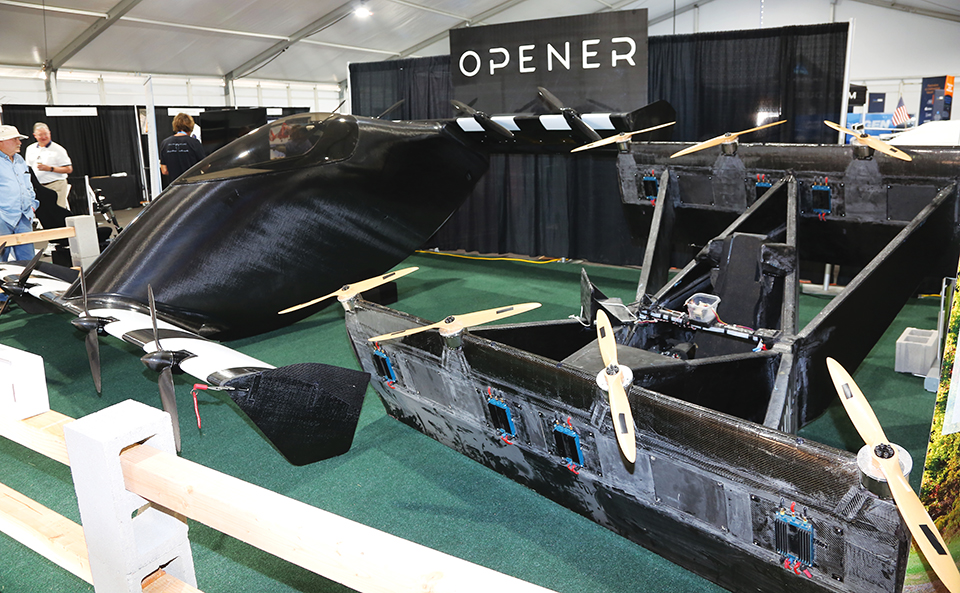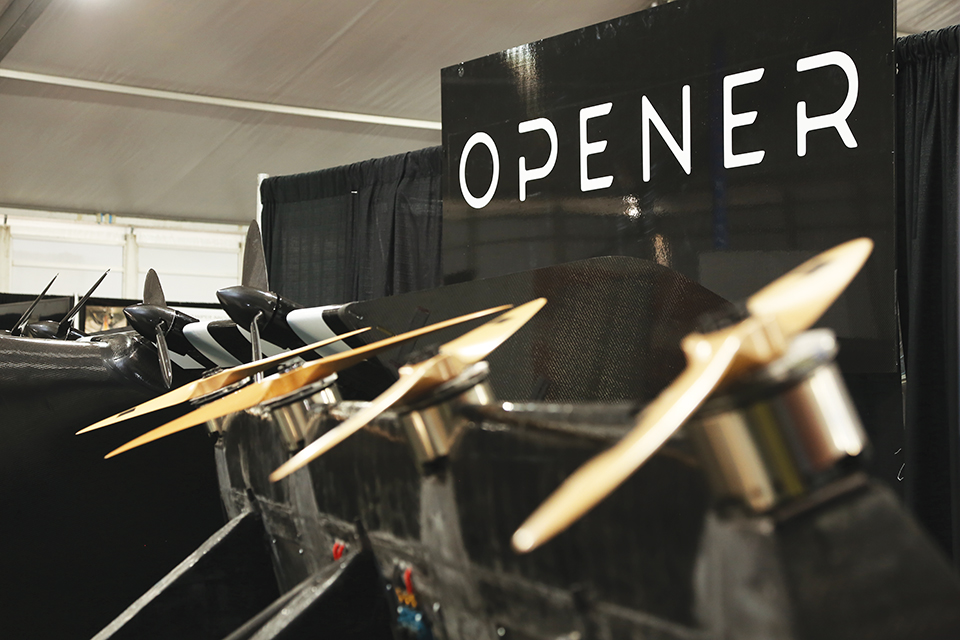New VTOL Ultralight is a Rocker
BlackFly aircraft has eight custom motors, computerized safety features and more
By Randy Dufault
July 23, 2018 - Working in stealth for a number of years, Opener founder and CEO Marcus Leng developed and then flew BlackFly, an all new fixed-wing, all-electric, amphibious, vertical takeoff and landing aircraft.
Since a crude prototype was developed in 2011, the concept has evolved into an eight-motor fly-by-wire airplane ultimately targeted at recreational flyers that may or may not hold a pilot certificate. The company now estimates that the various aircraft in their BlackFly development program have amassed something like 12,000 hours in the air.
“What happened was Marcus was happily retired,” said former Google executive and world skydiving record holder Alan Eustace. “He had built a successful manufacturing organization and then started doing his homework on electric motors, propulsion systems, carbon fiber technology, lightweight aircraft, and batteries, and he came to a conclusion that not many people had [10 or 11 years ago]; that it was possible now to build something that could fly based on electric propulsion.”
Alan joined the BlackFly team to help to make the concept into a complete product.
When asked what attracted him to the program he responded, “I actually thought aviation would be the last place that electricity would replace piston and turbine engines. The reason for that was that weight mattered.”
Alan heard about the program through a friend, went to see the BlackFly fly, and was convinced that he should get involved.
“For me it’s that cutting edge and the safety aspects really appeal to me,” he added.
BlackFly takes a somewhat different approach to the challenge of vertical takeoff and landing. Through automated control of the eight custom-designed electric motors, the entire craft rocks back to a vertical attitude for takeoff. It moves to the horizontal after departure allowing the canard configuration wings to provide lift and permit flight speeds and efficiencies not available to strictly rotorcraft configurations.
The computerized flight controls contain a number of safety features including soft landing assist, a return to place of departure button, and flight envelope protection. A ballistic parachute option provides added levels of safety.
Opener has a virtual reality simulator in its booth that demonstrates the simple-to-operate controls and many of the craft’s automated flying features.
Built to conform to the FAA Part 103 regulations for ultralight aircraft in the U.S., a pilot certificate is not required to operate the single-seat craft. A comprehensive training program that uses simulation will familiarize pilots with abnormal situations and ensure pilots understand the craft’s features and control systems prior to the first flight.
According to Marcus, BlackFly batteries will transport airplane and pilot about 20 miles on a full charge. Charging typically requires an hour with special equipment and six hours when plugged into a standard 110V outlet.
A heavier configuration, allowed under regulations in other countries, will support longer flight times and higher speeds.
Two BlackFly aircraft, including one with a substantial number of flight hours on it, are on display at Opener’s booth in the Innovation Showcase building in Aviation Gateway Park.


